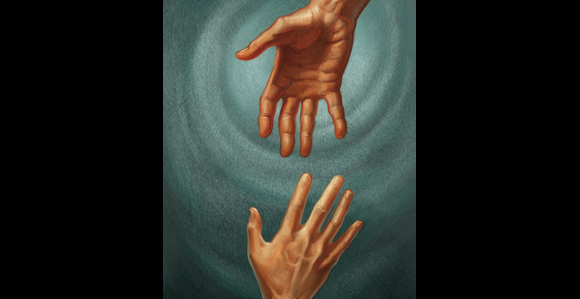Viewpoint: Service That Counts

“Charity in its purest form is loving people, standing shoulder to shoulder with them day in and day out in whatever obstacle they face.”
During one holiday season in West Virginia, a local stake contacted a women’s shelter and agreed to provide needed gifts for Christmas. It was a favorite tradition for the stake to serve others each year during Christmastime.
The young men and young women from the stake organized and made Christmas stockings. They gathered food, and on Christmas Eve they descended on the shelter where the children were gathered in a large multipurpose room. The youth from the stake passed out gifts, wished everybody a Merry Christmas, and sang a few holiday songs. The children were excited, the mood was festive, and the youth came away happy that they had helped others in need.
The following year, stake leaders proposed in a stake council meeting that the same project be carried out again, at the same shelter. To everyone’s surprise, the stake Relief Society president did not agree. “I’m sorry,” she said, “but I didn’t like that project.”
“What do you mean?” she was asked. “It was a great project. How could you not like it?”
The Relief Society president responded, “As we were handing out our gifts, I looked at the women and mothers standing around the room. What I saw on their faces was not the excitement I had expected. Instead, it was more like misery. They felt like failures. They were supposed to be in charge of Christmas. It was their cherished role to provide joy for their kids, and they had failed to do that. As a result, their kids had to rely on charitable strangers for presents. So, yes, I would like to do something different.”
The Relief Society president then proposed they go to the shelter directors and say, “We’d like to do something that helps the women feel like they are providing Christmas. What can we do? What would make this situation better than last year?”
Together they decided that prior to Christmas the stake would stock a room at the shelter with gift-quality items. The women could perform different jobs around the center, and in return they would get tickets to redeem for gifts and gift wrap. Over the course of the holiday season, the women would do the work, receive the tickets, and “buy” the gifts the stake had stored. They could then wrap and distribute the gifts to their children in ways traditional to their families.
While some stake members reacted with enthusiasm, the new approach was hard for a few to embrace. There would be no emotional concluding moment for them to tell stories about—they would not be present to see the youngsters rip off the paper and say, “Oh, this is what I wanted!”
But it was a better project for the mothers. Rather than coming away feeling like victims or failures, they would know that they had contributed. More importantly, their families would be strengthened.
The Church—through wards and stakes locally and through LDS Charities globally—is always looking to strengthen families and reinforce their ability to stay intact. Although the women’s shelter project took more time to plan and carry out—and it lacked the usual emotional high for some contributors—in the end it was a significantly better project. The mothers had been empowered, and their families looked to them with greater appreciation.
As the Church determines how best to contribute to global humanitarian projects, those representing LDS Charities look to five welfare principles to guide them. They ask themselves several questions, which can easily be adapted to local situations faced every day in wards and stakes.
1. Is the project something the Area Presidency (or stake presidency, bishopric, or family) feels is important?
2. Can the beneficiaries be involved in a meaningful way?
3. Is there some way for members of the Church to participate in a helpful way that does not take away ownership from families or beneficiaries?
4. Can we tap into the strengths of local solutions for local projects?
5. Outside intervention eventually goes away, so is there something we can do that will help people to be in a better, stronger position afterward to deal with issues that come up?
Following these principles may make the service the Church gives a bit harder to render. But the results are substantial. The reach of the service goes beyond the sharing of time and goods—to strengthen individuals and families.
President Thomas S. Monson said during the October 2008 general conference, “Never let a problem to be solved become more important than a person to be loved.”
The world around us is filled with need. While service of any kind is a worthy and welcome cause, Latter-day Saints have the chance to do more than just solve the immediate problem. Charity in its purest form is loving people, standing shoulder to shoulder with them day in and day out in whatever obstacle they face.
President Monson called this the Lord’s service.
“While driving to the office one morning, I passed a dry-cleaning establishment which had a sign by the side of the front door,” said President Monson to the youth of the Church. “It read, ‘It’s the Service That Counts.’ I suppose in a highly competitive field such as the dry-cleaning business and many others, the differentiating factor which distinguishes one store from another is, in actual fact, service.
“The message from the small sign simply would not leave my mind. Suddenly I realized why. In actual fact it is the service that counts—the Lord’s service” (Teachings of Thomas S. Monson, 280–81).
This Christmas season, may we remember the important lesson taught in a stake council meeting in West Virginia. There is joy found in all service. But service that lifts and encourages, that instills hope and understanding, and that strengthens individuals and families—service that counts—is the service that will change all of us for good.
